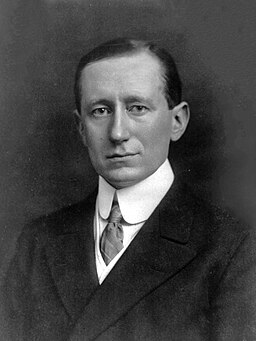Throwback Thursday: Remembering Guglielmo Marconi, the Father of Radio
Irish/Italian inventor Guglielmo Marconi was fascinated with electricity from a young age. He was particularly intrigued by the work of German physicist Heinrich Hertz. In the 1880s, Hertz was the first to create and detect radio waves. At this time, the telegraph was the main form of electrical communications, and incredibly important. People could communicate […]
Irish/Italian inventor Guglielmo Marconi was fascinated with electricity from a young age. He was particularly intrigued by the work of German physicist Heinrich Hertz. In the 1880s, Hertz was the first to create and detect radio waves.
At this time, the telegraph was the main form of electrical communications, and incredibly important. People could communicate almost instantly across continents and oceans. Starting in the 1830s, use of the electric telegraph became more common as the reach of the telegraph grew along with the railroads. Samuel Morse—of Morse Code fame—sent the first telegram in the United States in 1838, his encoded message traveling over two miles of wire.
The difficulty with the electric telegraph was that it required cables running from place to place in order to function. After several failed installation attempts, cables were successfully constructed and placed in the Atlantic Ocean in 1866, allowing telegrams to travel from North America to Great Britain and the European continent.
In 1894, at the age of 20, Marconi wondered about the possibility of wireless telegraphic communication. He began experimenting and was soon able to send a radio signal over several miles. When he took his discoveries to the Italian government in hopes of obtaining funds to continue his research, he was disappointed by their lack of interest. In fact, his letter to the Minister of Post and Telegraphs never even received an official response. It wasn’t long before Marconi moved to London to continue his work. He successfully sent messages across the English channel in 1899. In the fall of the same year, he installed wireless equipment on board a ship, the St. Paul; the St. Paul became the first ocean liner to announce its pending approach via wireless telegraph, while she was still more than fifty miles off the English coast.
December 12, 1901—112 years ago today—Marconi successfully sent the first wireless transatlantic signal from Cornwall, in Great Britain, to Signal Hill in Newfoundland, Canada. Marconi and his crew used a specially built antenna connected to a kite to extend reception and make the historic transmission possible.
Thanks to the advancements in Marconi’s work, wireless technology quickly overtook the telegraph industry and led to the advent of radio; in fact, Marconi is often affectionately known as the Father of Radio. In 1909 he was awarded the Nobel Prize in Physics, an award he shared with another influential physicist and radio pioneer, Karl Ferdinand Braun.
It’s pretty amazing to think how far we’ve come since Marconi flew his antenna kite 112 years ago today.
#DidYouKnow that American telegram company Western Union was still offering and operating telegram services through 2005?
**The Guglielmo Marconi portrait above is attributed to the Pach Brothers; posted here via the Wikimedia Commons.

 Member Connect
Member Connect